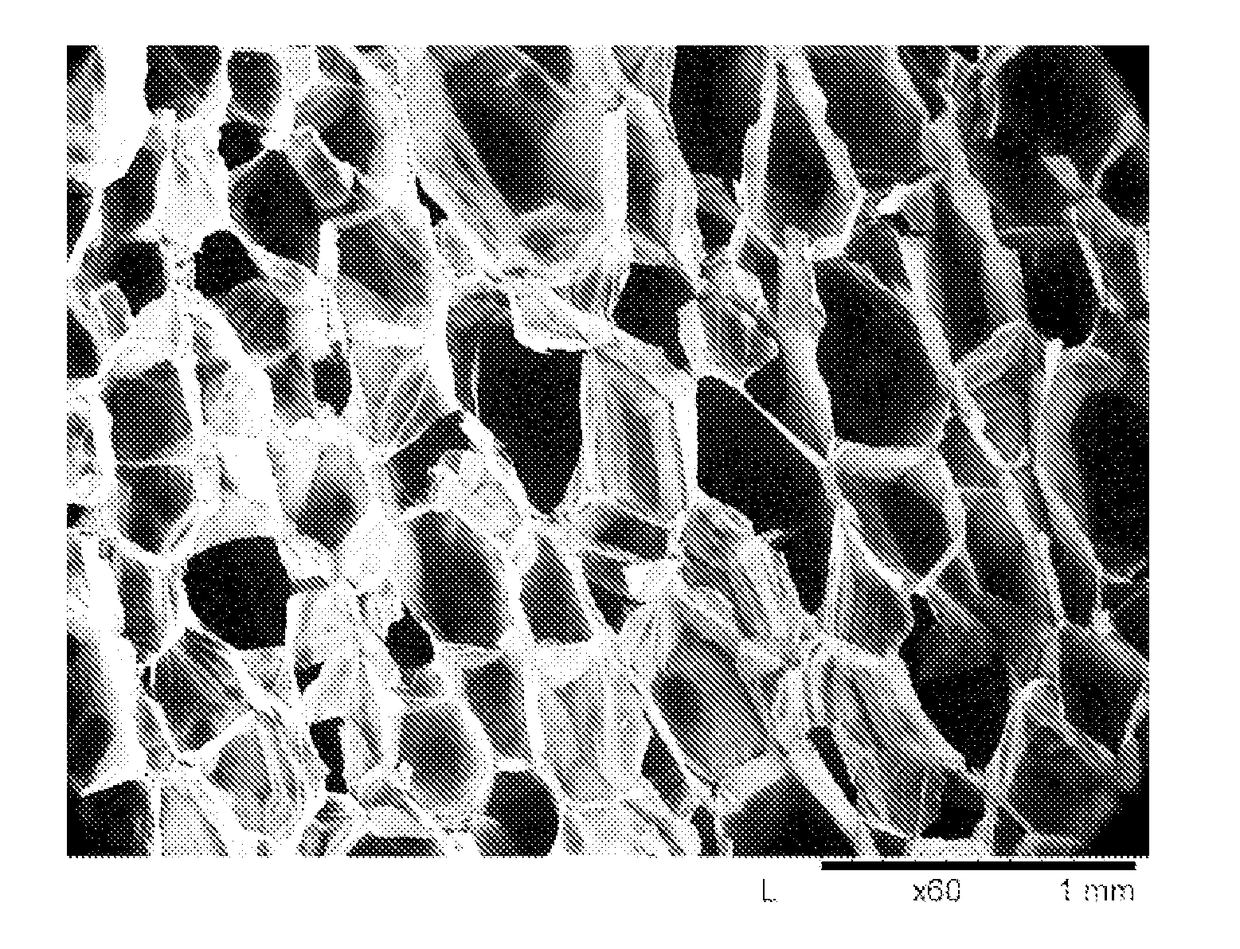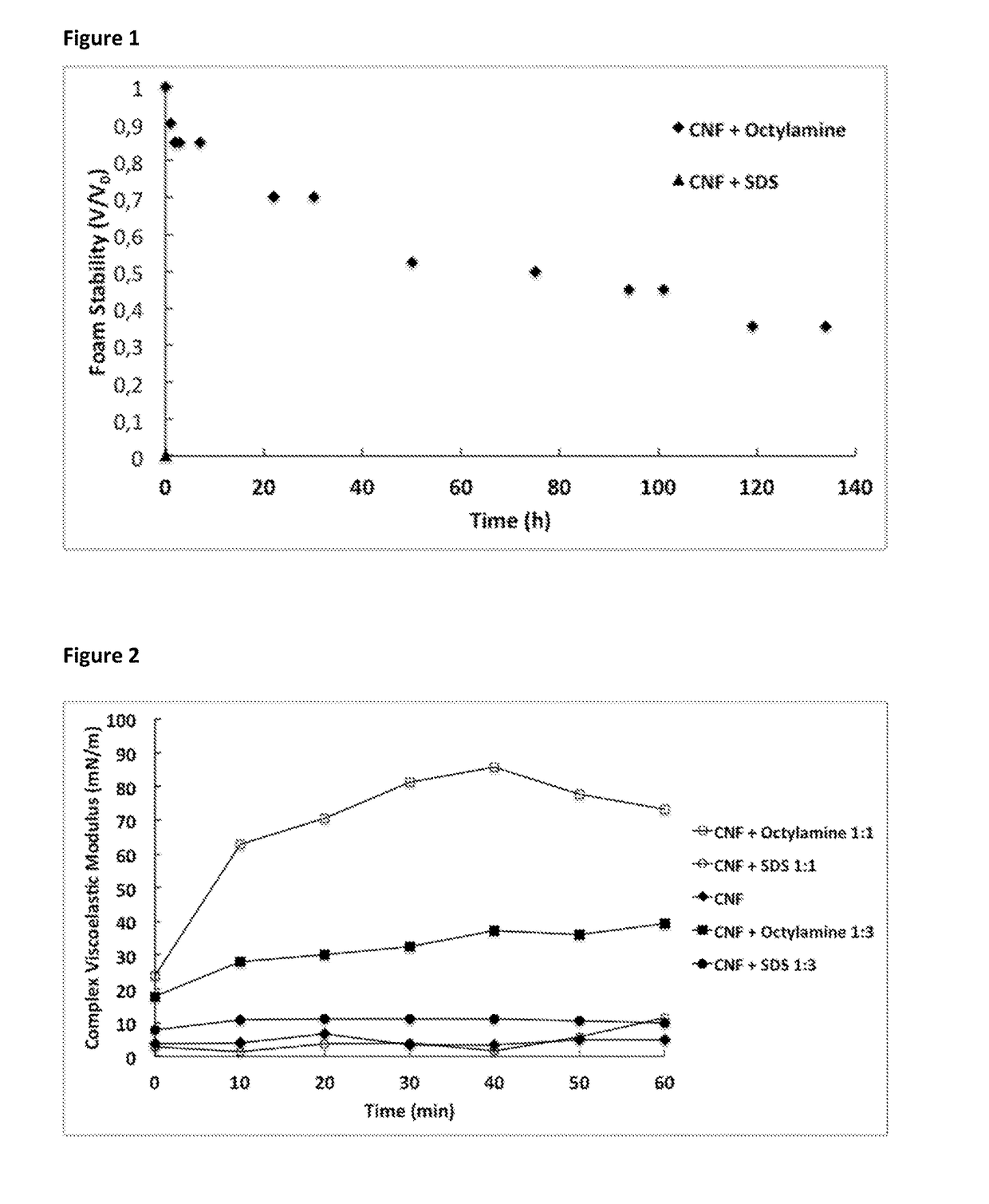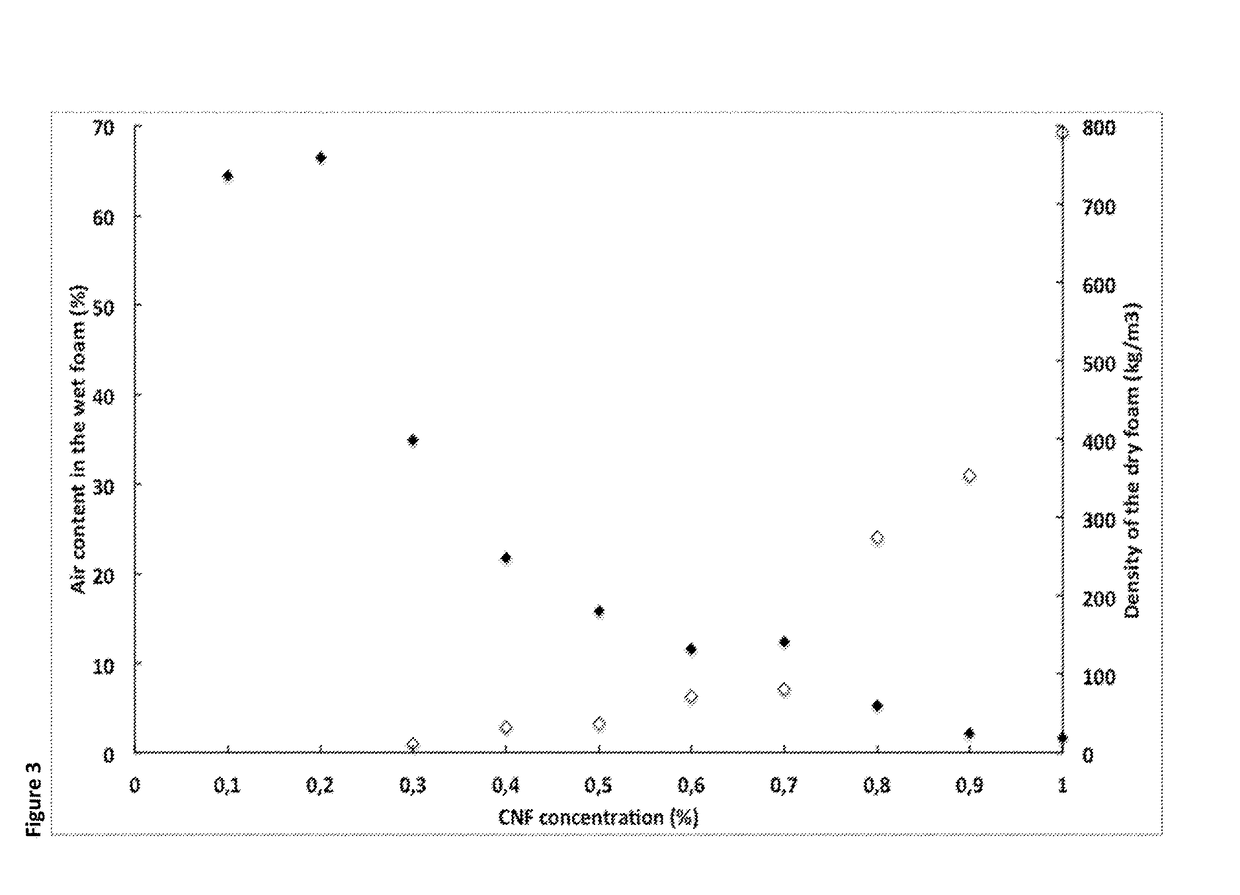Cnf cellular solid material with anionic surfactants
a technology of anionic surfactants and solid materials, which is applied in the direction of inorganic chemistry, flexible covers, alkali metal oxides/hydroxides, etc., can solve the problems of difficult to prepare large foam pieces without cracks using such methods, and achieve good mechanical properties, good pore size distribution, and high porosity
- Summary
- Abstract
- Description
- Claims
- Application Information
AI Technical Summary
Benefits of technology
Problems solved by technology
Method used
Image
Examples
examples
[0082]The cellular solid material according to the present invention and comparative example are illustrated in the following examples.
[0083]Materials
[0084]Cellulose Nanofibers (CNF).
[0085]Different grades of cellulose nanofibers (CNF) were used to prepare cellular solid materials. The different grades are described below.
[0086]Enzymatic CNF (Enz-CNF) was prepared from pulp fibers that were subjected to an enzymatic pre-treatment and thereafter defibrillated in a high-pressure homogenizer, similar to a previously described method (Henriksson et al. 2007).
[0087]TEMPO-CNF was prepared from a commercial sulfite softwood-dissolving pulp (Domsjö Dissolving Pulp; Domsjö Fabriker AB, Domsjö, Sweden), with a hemicellulose content of 4.5% and a lignin content of 0.6%. The never-dried dissolving pulp fibers were oxidized using TEMPO according to a previously described method (Saito et al. 2007). The fibers were suspended in water containing TEMPO and NaBr. The TEMPO-mediated oxidation of the ...
example 1
[0112]Different types of surfactants were used to prepare cellular solid CNF materials with maintained cellular structure. 30 g of TEMPO-oxidized anionic CNF dispersion (0.5 wt %, surface charge 983 μeq / g) was combined with different anionic surfactants, see Table 1. The different combinations were mixed, adjusted to pH 8, and foamed for 5-10 minutes using a laboratory mechanical stirrer at 2000 rpm and a small impeller (diameter=3 cm). The resulting wet foams were poured into plastic trays and were dried in a fan oven at 40° C. Table 1 shows that a variety of anionic surfactants can be used to prepare cellular solid CNF materials with maintained cellular structure. These examples were not optimized in terms of amount of surfactant, density, cell size, thickness or mechanical properties.
TABLE 1Cellular solid CNF materials comprising different surfactants.Amount ofDensity of thesurfactantcellular solidSurfactant(wt %)*(kg / m3)Sodium Dodecyl Sulfate (SDS)2.617Sodium Lauryl Ether Sulfat...
example 2
[0113]Air content and density of cellular solid material. To 30 g of TEMPO-oxidized anionic CNF dispersion (surface charge 983 μeq / g) at different CNF concentrations, 0.1 wt %-1.0 wt %, was added SDS solution (20 g / L) and the combined fluids were mixed, adjusted to pH 8, and foamed for 5-10 minutes using a laboratory mechanical stirrer at 2000 rpm and a small impeller (diameter=3 cm). The resulting wet foams were poured into plastic trays and were dried in a fan oven at 40° C.
[0114]In a first set of experiments, the SDS load was kept constant at 0.1 ml SDS solution (20 g / L) in 30 g of CNF dispersion. FIG. 3 shows the air content in these wet foams (closed diamonds) and density of the cellular solid materials (open diamonds) as a function of the CNF dispersion concentration during foaming. For the lowest CNF concentrations, 0.1 wt % and 0.2 wt %, the air content in the wet foams was high. These foams were however not stable enough but collapsed upon drying. The air content decreased ...
PUM
| Property | Measurement | Unit |
|---|---|---|
| density | aaaaa | aaaaa |
| diameter | aaaaa | aaaaa |
| diameter | aaaaa | aaaaa |
Abstract
Description
Claims
Application Information
 Login to View More
Login to View More - R&D
- Intellectual Property
- Life Sciences
- Materials
- Tech Scout
- Unparalleled Data Quality
- Higher Quality Content
- 60% Fewer Hallucinations
Browse by: Latest US Patents, China's latest patents, Technical Efficacy Thesaurus, Application Domain, Technology Topic, Popular Technical Reports.
© 2025 PatSnap. All rights reserved.Legal|Privacy policy|Modern Slavery Act Transparency Statement|Sitemap|About US| Contact US: help@patsnap.com



